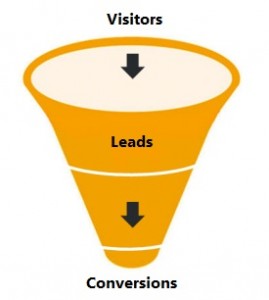One of the primary challenges that businesses face in online marketing is keeping their existing customers engaged with their brand, as well as being able to interact with potential new customers who visit their websites.
Below we list several website optimization methods that can help make your website more interactive for users to help your business achieve this level of engagement with site visitors.
Produce Content Worth Reading
The most beneficial strategy you implement to make your website more interactive is to develop content that is worthy of interaction.
No matter what format you post your content, whether that be in the form of a sharable video or in a blog post that allows commenting from users, if the content isn’t valuable or interesting to a user, they won’t be compelled to interact by leaving a comment, liking your posts, or sharing your content with others.
Integrate Social Media Elements
Integrating social media elements into your website design is an excellent way to make your website more interactive.
Among the social media elements you can implement to make your site more interactive for users are social sharing icons so your site visitors can easily share your exceptional blog posts, videos, web pages easily with their Facebook, Twitter, LinkedIn, Google+ or Pinterest contacts.

Integrating other social media elements such as your Facebook or Twitter feeds, so that your social media pages are easily accessible, or integrating “Sign in with Twitter” or “Sign in with Facebook” login options also makes your website more interactive – and socially relevant.

Provide Incentives to Your Site Visitors
Keeping your site visitors engaged by offering incentives to keep coming back to your website is a great way to make your site more interactive for users.
Offering them discounts on services, awarding random giveaways for liking or sharing your content, providing coupons or free information when they sign up for your company eNewsletter or a free eBook are all excellent ways to make your site more interactive for users.
Make it Easy to Contact You
 This might be a simple suggestion, but it goes a long way for the overall effectiveness of your website for users. Ask yourself some of these questions:
This might be a simple suggestion, but it goes a long way for the overall effectiveness of your website for users. Ask yourself some of these questions:
- how easy it is to find your company’s phone number or email address?
- is there an easily accessible contact form allowing users to get more information about your products or services?
- does your website offer a live chat feature for users to immediately interact with someone in your organization who can get them the information they’re looking for?
If the answers to these questions aren’t positive, you’ve got room to improve when it comes to making your website more interactive for users.
These website optimization strategies are just the tip of the iceberg when making your website more interactive. If you’d like to learn more about optimizing your company website or effective website design strategies, contact me today for a free consultation.



 For other lead-generating websites, a website conversion can be construed in a few different ways. For example, if you’re a realtor, getting a lead (phone call or email contact) from a prospective listing simply gets that site visitor into the realtor’s “conversion funnel.” It’s then the realtor’s job to sell themselves as the right agent for the job to the person. But the Internet marketing company can’t necessarily help in that process once the initial contact is made, so the contact itself is considered a website conversion.
For other lead-generating websites, a website conversion can be construed in a few different ways. For example, if you’re a realtor, getting a lead (phone call or email contact) from a prospective listing simply gets that site visitor into the realtor’s “conversion funnel.” It’s then the realtor’s job to sell themselves as the right agent for the job to the person. But the Internet marketing company can’t necessarily help in that process once the initial contact is made, so the contact itself is considered a website conversion. In terms of website optimization, simply having an attractive website doesn’t guarantee a user will convert. Here are some ways that web design elements play into a user’s overall experience and ways to increase the likelihood of a conversion:
In terms of website optimization, simply having an attractive website doesn’t guarantee a user will convert. Here are some ways that web design elements play into a user’s overall experience and ways to increase the likelihood of a conversion: